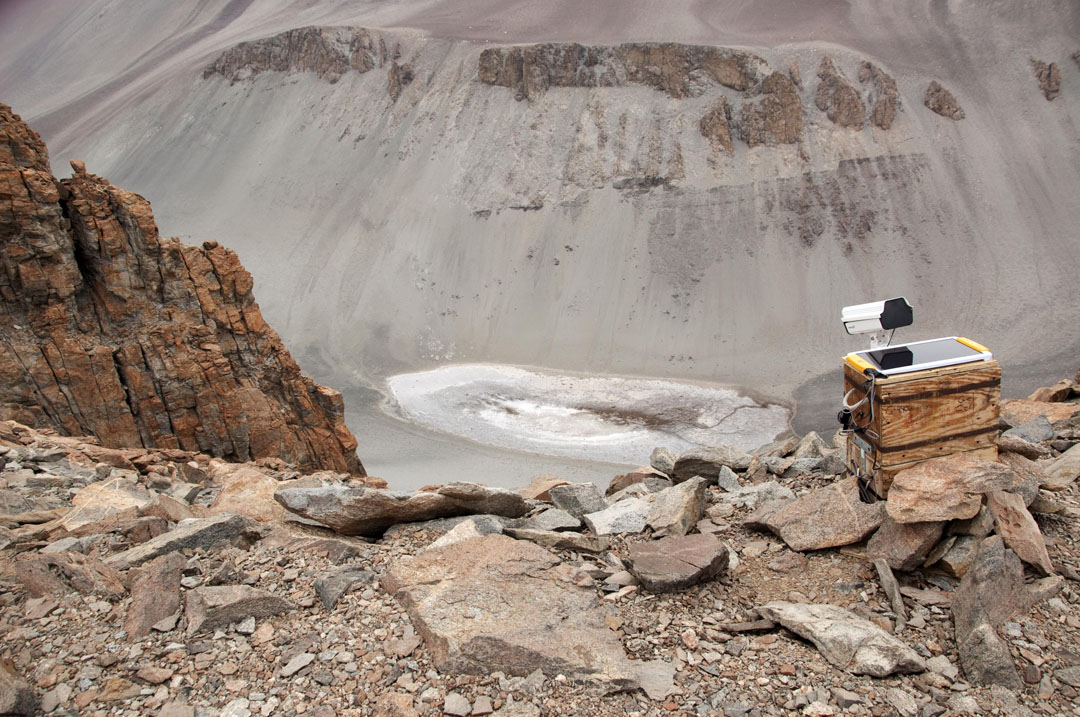Salty Antarctic Pond May Hold Clues to Water on Mars


Antarctica's bizarre Don Juan Pond is the saltiest natural body of water on Earth — a distinction that keeps the little lake in a fluid state on an otherwise frozen continent.
Now researchers have found new evidence about how the pond gets enough salt to stay wet in such a hostile environment, and their study may hold clues about how liquid water might flow on Mars.
"It was a simple idea," Brown University researcher James Dickson explained in a statement. "Let's take 16,000 pictures of this pond over the course of two months and then see which way the water's flowing. So we took the pictures, correlated them to the other measurements we were taking, and the story told itself."
Those time-lapse pictures revealed that the pond's water levels rose in step with daily spikes in temperature. This suggests modest midday snowmelt is one of Don Juan Pond's sources of water, but it doesn't explain where its critical salt supply comes from. [The Most Mars-Like Places on Earth]
The researchers turned another camera on channels of loose sediment around the pond known to be rich in calcium chloride salt. Whenever humidity in the air peaked, dark streaks emerged in this soil, which the researchers interpreted as water tracks formed by a process known as deliquescence. After sucking water out of the air, these salts seem to sit on the sidelines until the occasional flow of snowmelt washes them into the pond, helping to replenish the saline supply, the researchers said.
Don Juan Pond could be a stand-in for basins on the frozen desert of Mars. Scientists say that rivers and oceans may have been prominent features in the Red Planet's early history, but any water at the surface today would have to be frozen, extremely salty, or thoroughly mixed with minerals.
The water tracks around Don Juan Pond look strikingly similar to features recently found on Mars known as recurring slope lineae. The Martian clusters of dark, narrow lines periodically appear and grow on slopes and cliff faces in the Red Planet's warmer regions. Some scientists have taken them to be evidence of occasional flows of briny water on Mars today.
Get the world’s most fascinating discoveries delivered straight to your inbox.
What's more, chloride-bearing salts have been detected on Mars, which would be capable of the same kind deliquescence seen in Antarctica, the researchers note. The new study also found that Don Juan Pond manages to stay wet without being supplied groundwater, which is not thought to exist on Mars today.
"Broadly speaking, all the ingredients are there for a Don Juan Pond-type hydrology on Mars," Dickson said.
Scientists ultimately hope that finding water on celestial bodies such as Mars could lead to evidence for life, either past or present, beyond Earth. As the authors of the new study point out, salt-loving microbes have been discovered living just below the surface of the Atacama Desert in northern Chile, where subsoils are thought to be a good analog for dirt on Mars. And if salty basins on the Red Planet represent hydrologic systems like Don Juan Pond, "they may have significant potential for hosting resilient microbiota," the scientists wrote, "and the most habitable places on Mars may mimic the least habitable places on Earth."
The research was detailed online Jan. 30 in journal Nature Scientific Reports.
Follow Live Science on Twitter @livescience. We're also on Facebook & Google+.



